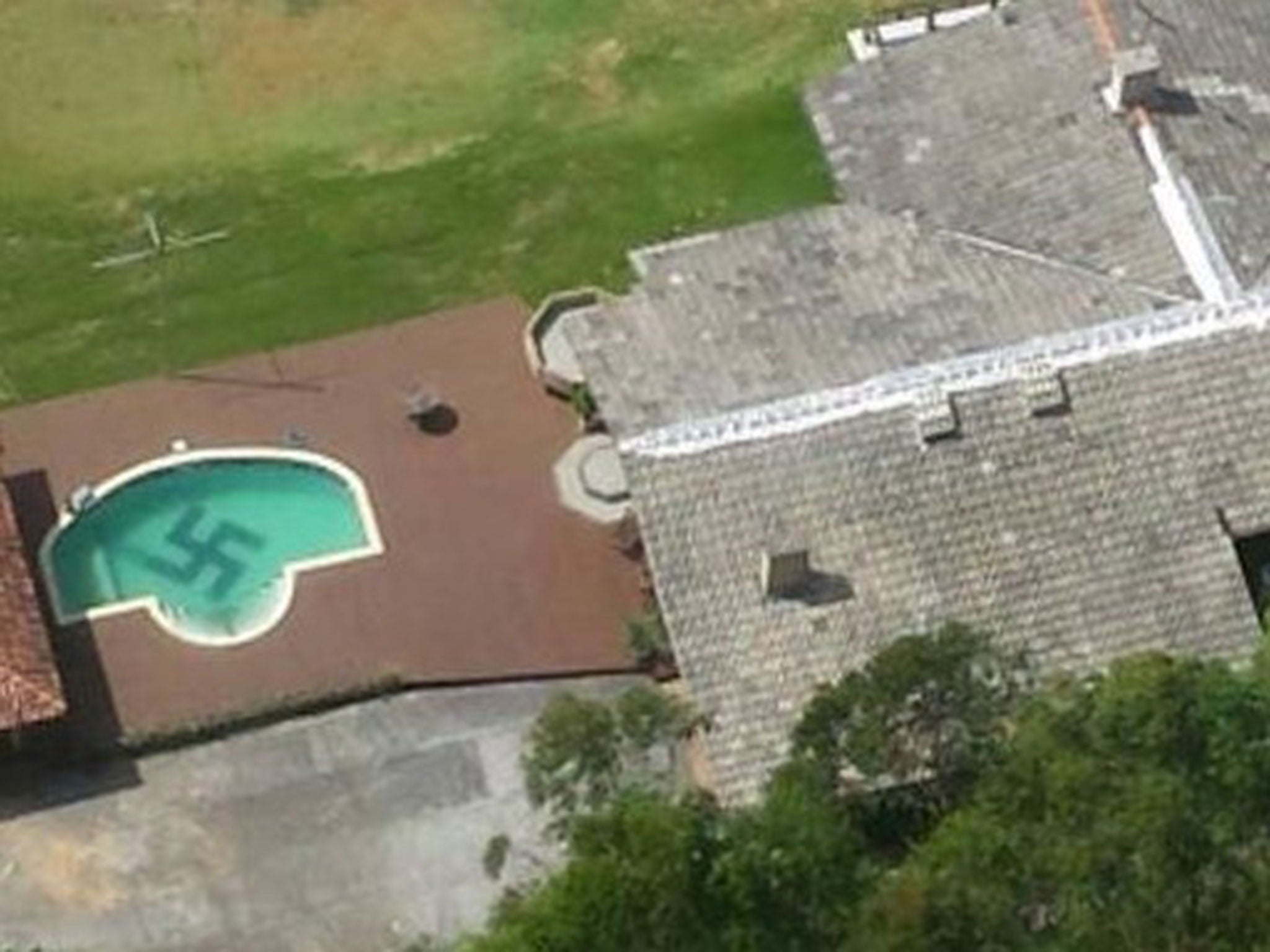Swastika in swimming pool spotted by police helicopter in Brazil
The huge symbol has been in place for 13 years

A police helicopter investigating a kidnapping case in Brazil made the bizarre discovery of a huge swastika tiled into the bottom of a swimming pool.
Local authorities in Pomerode, in the Santa Catarina region, spotted the symbol on private property while flying overhead.
Police said that the pool has had the swastika for 13 years, according to CNN.
But officials said that no charges would be filed, as the homeowner - who has not been identified - was not promoting Nazism.
The swastika was used by Buddhists, Hindus and Jains as a symbol of 'well-being' for centuries.
It was adopted by early Western travellers who went to Asia, and 'brought back' until it was adopted by advertisers and designers - even on products such as Coca Cola and Carlsberg.
It was also used by US military units in World War One and on RAF planes in 1939, according to US graphic design writer Steven Heller, who plots its history in his book, The Swastika: Symbol Beyond Redemption?
He told the BBC that the swastika was even used by Boy Scouts and the Girls' Club of America who would "send out swastika badges to their young readers as a prize for selling copies of the magazine".
But the symbol was later appropriated and used by Hitler and the Nazis until it became synonymous with fascism.
It continues to be used as a symbol of anti-Semitism and was banned in Germany at the end of the war. The country even tried - unsuccessfully - to introduce an EU-wide ban in 2007.
Pomerode, in the southern state of Santa Catarina, has a long history of European migration, particularly Germans and Austrians.
After the Second World War, the Austrian-born SS commandant of the Sobibór and Treblinka extermination camps, Franz Stangl, was tracked down to the Brazilian capital of Sao Paulo, where he was arrested in 1967.
Subscribe to Independent Premium to bookmark this article
Want to bookmark your favourite articles and stories to read or reference later? Start your Independent Premium subscription today.
